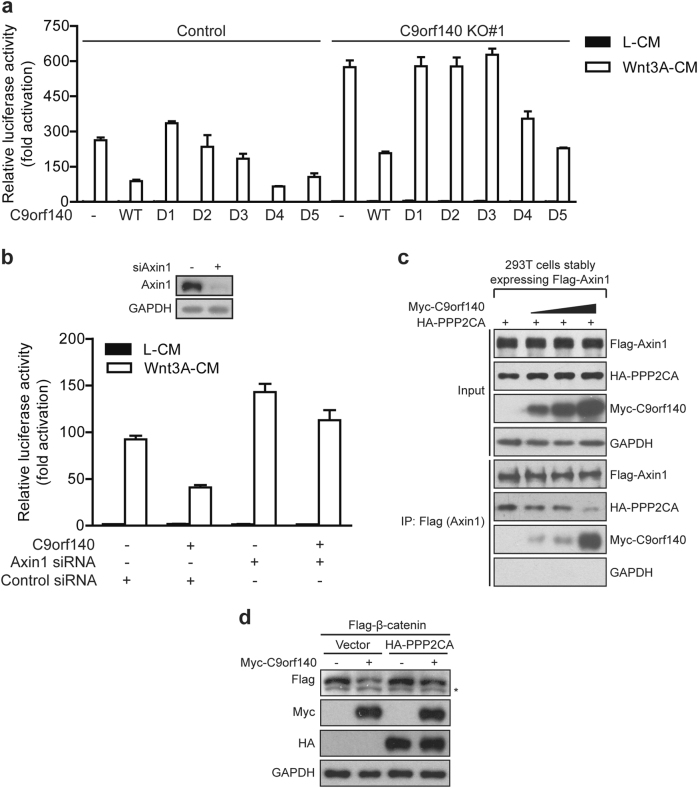Fig. 6.
C9orf140 outcompetes binding of PP2A to Axin1. a The region around amino acids 1–239 of C9orf140 is necessary for negative regulation of Wnt/β-catenin signaling. TOPFlash luciferase assays were performed in control and C9orf140 KO#1 293T cells transfected with empty vector, C9orf140 WT or a series of Flag-tagged C9orf140 deletion mutants. Luciferase activities were measured after treatment with L-CM or Wnt3A-CM for 18 h. Data were normalized to empty vector-transfected control 293T cells and are presented as the mean + SD. b The inhibitory effect of C9orf140 on Wnt/β-catenin signaling depends on Axin1. The 293T cells were first reverse transfected with control or Axin1 siRNA at the time of seeding cells, then subjected to cDNA transfection after adherence and treatment with L-CM or Wnt3A-CM. Data were normalized to L-CM-treated control cells. The data shown are derived from a representative experiment expressed as the mean + SD. The upper panel shows western blot verification of the validation of Axin1 siRNA. c Binding of PPP2CA to Axin1 is an alternative to the C9orf140–Axin1 interaction. The 293T cells stably expressing Flag-Axin1 were transfected with limiting amounts of HA-PPP2CA and increasing amounts of Myc-C9orf140 as indicated, and the lysates were subjected to anti-Flag immunoprecipitation. d The 293T cells were transfected with Flag-β-catenin, HA-PPP2CA, and Myc-C9orf140 as indicated for 24 h, and lysates were subjected to western blotting. *Non-specific band

